This is the second part of a three-part series. In the first part, I outlined how to audit your mobile app retention efforts. Part three will be ‘Implementing the Strategy’
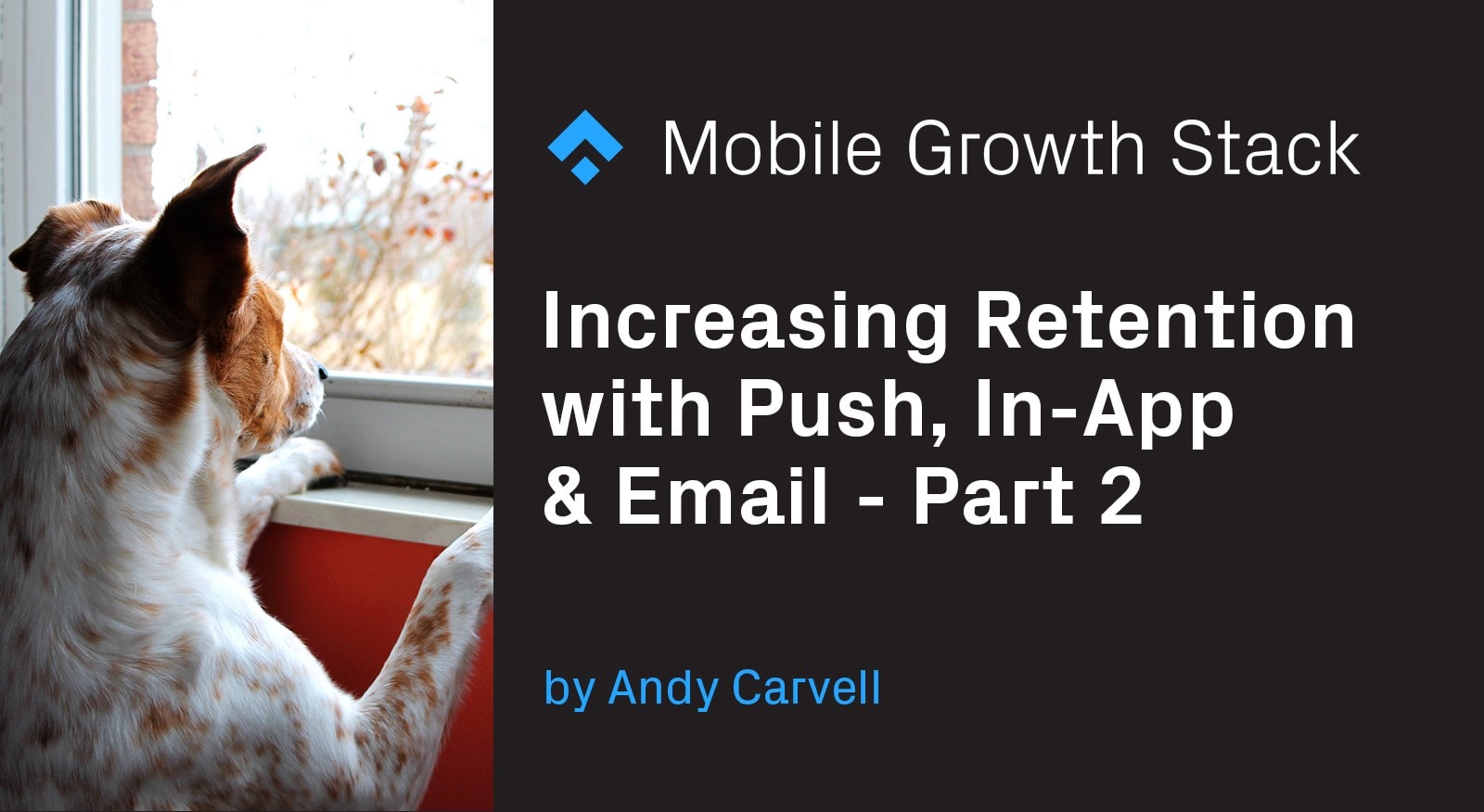
In part 1, I outlined a process for auditing mobile app retention efforts and identifying some qualitative and quantitative signals that can inform a retention strategy. This article provides a framework for those strategic decisions and outlines common strategic approaches that tackle different inputs to retention.
Defining Strategic Objectives
Consider the make-up of your retained users in any given period to identify the biggest opportunity. Looking at your active users in a Growth Accounting view (discussed in Part 1) will help you understand where to focus.
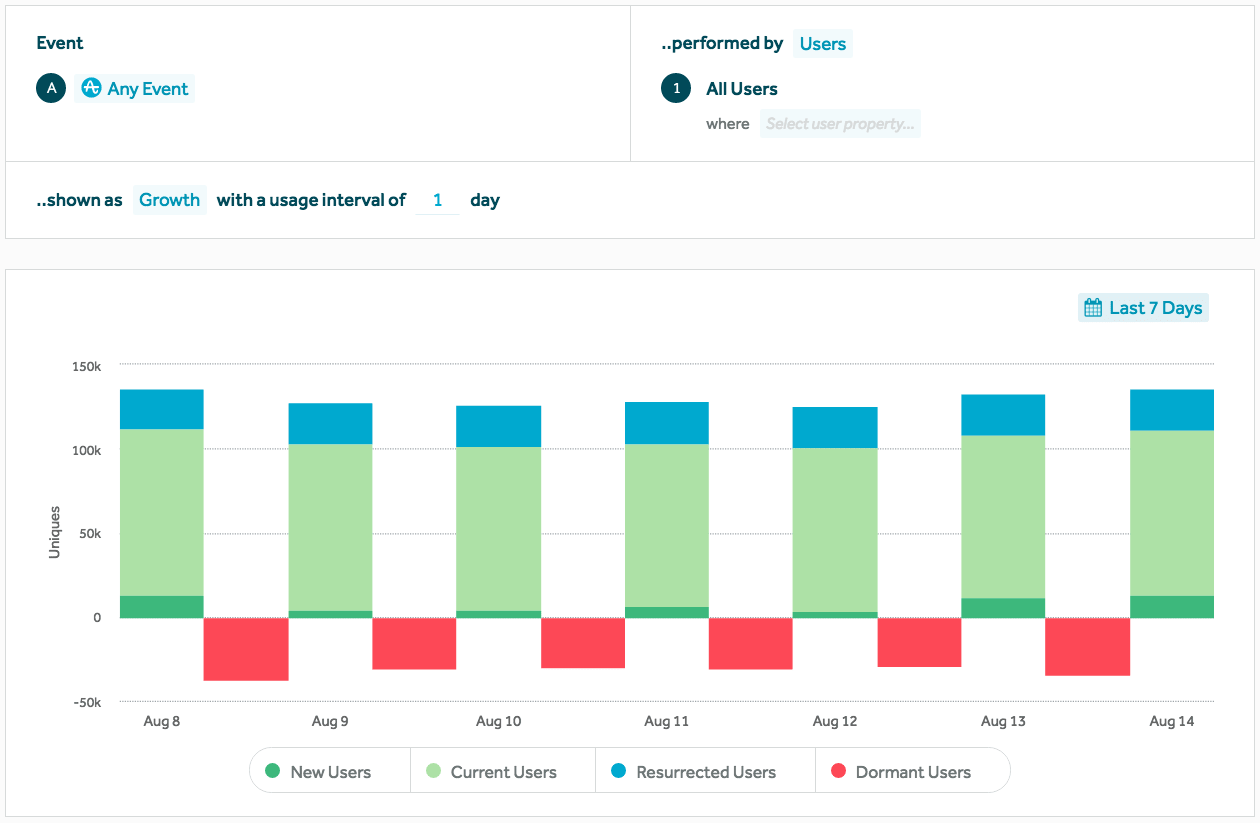
A growth accounting view (screenshot: Amplitude)
A mobile app’s active users in any particular time period (i.e. week, month, or whatever period makes sense to consider within the context of your app and its natural usage) will either be New, Repeat (in Amplitude parlance: ‘Current’) or Returning users.
In an ideal world, all New Users are activated within their first period and come back (i.e. become Repeat users) in the subsequent periods.
Repeat users will hopefully remain engaged and ideally increase their engagement over time as they realize more and more value from the app and develop strong habitual usage.
Users who have lapsed in their usage may come back to the app, in which case they are classified as Returning users for that period. Ideally, they re-develop a habit with the app and become Repeat users in the next period.
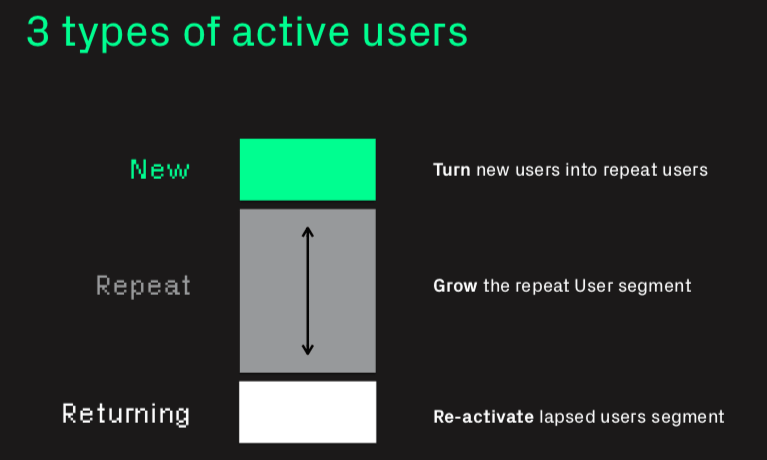
The retained active users in any given period are always in one of these three buckets
At a high level then, it’s useful to decide which of these buckets needs the most immediate focus. Below, I’ll outline some common strategic goals and explore how well they fit with CRM/Messaging tactics.
Strategic Goal: Activate more Users
The opportunity to improve activation with CRM goes much further than a simple Welcome Email. And even Welcome Emails are rarely iterated on once deployed.
Invariably, the biggest opportunity exists with Activation: onboarding more users successfully and helping them to get into the habit of using the app regularly. If you’re just starting out with Retention initiatives, the biggest wins will almost certainly be available in improving activation rates. Even if you’ve been working on activation for a year, it may still be worth iterating further on this stage before looking elsewhere for impact.
While much can — and should — be done to improve Activation rates by making changes to the product itself, activation can always be significantly and measurably improved with well-crafted Push, In-App and Email campaigns during the critical early stages of user adoption.
Supporting, educating and onboarding new users more effectively with personalized, adaptive, push, in-app and email messaging presents an opportunity not only to measurably improve activation rates but also to communicate the brand values and personality to the user. Ideally, the user develops a strong connection to the product and the brand during this process; this hypothesis can be validated through qualitative research and supported by improved activation and retention metrics.
Strategic Goal: Increase Visit Frequency of Repeat Users
Even if you see a healthy and growing Repeat Users segment in your growth accounting view each month, consider how many times these users return within the period: one of the problems with metrics such as MAU and WAU is that they are binary; the user is counted as active or inactive in the period, no matter whether they come back once or a hundred times.
If a significant amount of users are engaging with the app less often than your reasonable expectation of natural usage frequency, then the increasing frequency of use should be a key strategic goal.
Tactically, Push notifications, Emails, or possibly even SMS are likely to be important channels when employing a strategy to increase frequency since these channels have the power to bring users back into the app when they might not have otherwise returned. I’ll cover tactics in Part 3.
Strategic Goal: Increase Depth of Engagement from Repeat Users
Rather than aiming to bring users back for more sessions, perhaps your goal is to promote deeper, longer-lasting sessions, where the user spends more time in the app, interacting with key features for longer, or consuming more content.
The content-consumption use case, in particular, is prime for messaging, especially when there is a large library of existing content (i.e. discovery of relevant content can be challenging), where there is new content on a regular basis (i.e. users may struggle to keep up to date, or risk missing out on content they would love). In the case where both of these are true — where new content is constantly added to a huge library — messaging can be a really valuable and impactful part of the user experience.
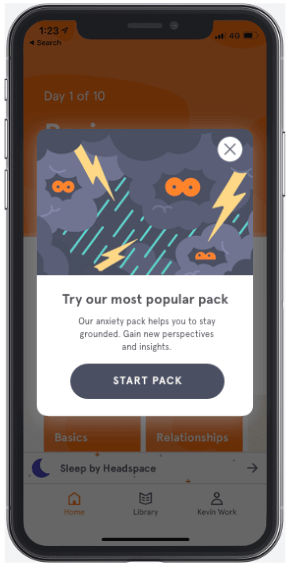
An in-app message campaign in the Headspace app to increase discovery and consumption of new content
Strategic Goal: Increase Feature Adoption
This is arguably of a sub-strategy that can support an Activation strategy (targeting New Users) and also an Increasing-Depth-of-Engagement (targeting Repeat Users) strategy. If implemented intelligently — more on this in Part 3 — initiatives to drive feature adoption can often drive progress toward both goals simultaneously.
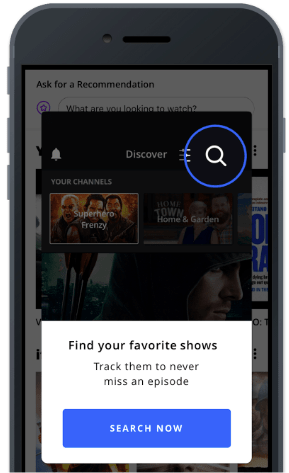
A feature-adoption In-App Message (with transparency effects)
If, during the audit phase, your analysis of user behavior showed many users are failing to discover (or meaningfully engage with) key features, increasing adoption of these features should be a key strategic goal. In-App messages, combined with appropriate behavioral segmentation, are a great channel to use at a tactical level to promote features, direct users to them and provide hints or explanations of them how to use them, possibly supported by longer-form content delivered via email or hosted on the company blog, or within a content feed in the app.
Strategic Goal: Increase Cross-Platform Usage
Another common strategic objective for platforms that have multiple client applications is to increase cross-platform usage: users are often observed to have higher overall retention with a product or platform when they are interacting across multiple devices, possibly with different modes of usage. Therefore, it can be a successful strategic move to actively promote the use of other platforms to increase the number of user touch-points. A tactical example would be encouraging users connecting your Spotify account to your Amazon Echo, Smart TV, or Google Home device via an in-app message or email campaign.
Strategic Goal: Re-Activate Lapsed Users
Re-Activation is hard. If a user has genuinely lapsed — as opposed to simply go on vacation— there’s a reason behind it. Perhaps, for some users, the app is simply not meeting their needs/expectations, in which case this could indicate either a product or a user-acquisition issue (more likely some combination of the two: product/market fit).
The reality is typically more nuanced: there are myriad reasons why users might fall out of love with your app and it’s unrealistic to expect to please all people, all of the time. As always, the answer lies in actually talking to users, through questionnaires, phone calls, focus groups, community forums, social media, etc.
Taking time to understand the reasons why users abandon your mobile app and then devising approaches to address common concerns should arguably be a company-wide effort. Reactivation at scale cannot be achieved with simplistic “We miss you!” push notifications or the odd discount voucher (though these tactics may yield some limited impact).
The above caveats notwithstanding, CRM can play an important role in reaching out to lapsed users. Email, Push Notifications and even SMS are channels that can reach users when they are not in the app (and even when they have de-installed in the case of Email and SMS). Giving users a reminder and a compelling reason to come back to re-experience the app will have a positive impact with an at-least-nonzero percentage of the lapsed user-base, but comes with a high risk of further alienating already-disinterested users.
Strategic Goal: Churn Prevention
In the ideal world, the growth team has a strategy in place to intervene before a user lapses, based on signals that their engagement is waning. Successful apps identify these users before they become long-term churned and find — perhaps unsurprisingly — that it’s far easier to re-vitalize a lapsing user than to re-activate the genuinely-lapsed.
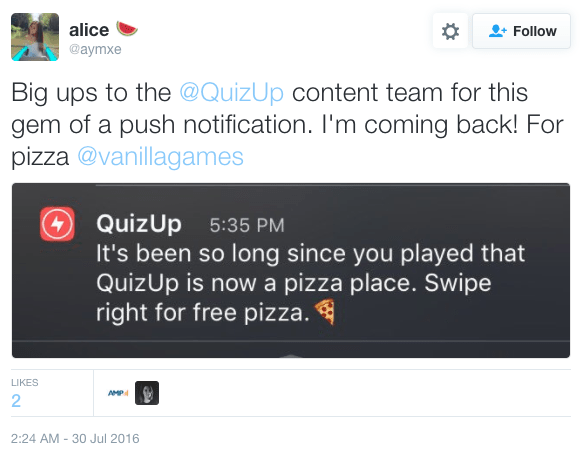
One of the more creative campaigns I’ve seen: the offer of free pizza in a re-activation push delighted at least some users (src: https://www.leanplum.com/blog/7-most-creative-push-notifications/)
Churn prevention is a huge and exciting topic that warrants its own blog posts, so I won’t cover it in depth here. However, I will provide some practical tips on how to approach the topic in Part 3 of this series.
Hybrid Strategies
All of the above strategies — implemented effectively — will increase retention in the mobile app. Adopting a hybrid strategy — aiming to achieve more than one of the strategic goals above simultaneously— is also therefore an attractive option. However, the reader should be reminded that strategy is about focus and that focus usually necessitates trade-offs or arbitrage.
It’s certainly possible to pursue multiple objectives simultaneously, especially as the team grows. However, progress towards any individual objective is likely to be slower than if it were pursued with laser-focus. It’s a depressingly common situation to see companies defining ten or more ‘strategic objectives’ for the year ahead; the leadership team identifies many things they need to do in order to be successful in the marketplace. Such situations represent a failure of strategic thinking and are corrosive to team morale and effectiveness.
If it seems likely that multiple strategies would be similarly beneficial to the business and to the overall usage growth of the app, the Growth Lead might consider a divide-and-conquer approach, whereby one strategy is tackled from a CRM standpoint and another through in-product A/B testing. In such a scenario, sub-teams can focus on moving different input metrics (i.e. pursue different strategies) while the overall Growth effort is hopefully moving the needle on two fronts simultaneously.
Fortune Smiles Upon The Brave (while occasionally scowling in places The Brave aren’t looking)
Some initiatives sometimes prove impactful across multiple metrics, proving beneficial across activation, engagement, and re-activation. I would personally recommend focussing on one of these at a time and to accept the good fortune if the results are strong across the board, rather than attempt to design every initiative with the aim of hitting multiple goals. The corollary, of course, is that an initiative that pursues one strategic goal might hurt another. This is why every experiment needs to be analyzed not just for its impact on the target metric, but also a range of other indicators.
Strategies suited to CRM
From a CRM perspective, it’s worth considering which of the above strategies are most suited to messaging. CRM can typically drive impact in any of the above strategic scenarios, but in my experience, CRM is a great lever for:
- Improving Activation Rates
- Increasing Frequency of Use
- Increasing Feature Adoption
- Re-Engagement of Lapsed or Churned Users
When the strategy is to increase the depth of engagement, CRM can certainly play a part (particularly through increasing feature adoption), but it’s likely that enhancements to the product and/or content in the app (if applicable) will deliver more meaningful gains than a CRM-only approach.
All of the other strategies can also be tackled primarily with non-CRM approaches, but CRM can deliver impact fast, driving measurable impact on growth metrics in parallel with the product team’s development of core functionality.
Mini Case Study: SoundCloud’s Hybrid Retention Strategy
During my team leading the Retention Team at SoundCloud, our North Star Metric (the key engagement metric we were optimizing for) was Listening Time. Our retention strategy was therefore predicated on either bringing users back for longer listening sessions OR for more sessions. Either of these strategies would increase an input to Listening Time:
Avg Weekly Listening Time per User = Avg Listening Session Length x Avg Weekly Sessions
The above formula shows that Weekly Listening Time is a function of two inputs. Increasing either of the inputs would, therefore, increase the output.
We didn’t really mind whether we increased average listening time per session, or the number of sessions since both would contribute to greater listening time on the platform overall. Ideally, we wanted users to come back more often and listen for longer when they did. Therefore, SoundCloud employed strategies aimed at increasing both of these input metrics.
Product-centric session-length experiments
One of the best examples of a successful tactic (though in the product, rather than via CRM) for increasing avg. listening time per session at SoundCloud would be the Autoplay feature: defaulting to auto-playing a new track after the current one finishes. Autoplay is now the default on most streaming platforms, including Netflix, Youtube, and many others, precisely because it leads to more media consumption and takes advantage of ‘lean back’ usage patterns, where users seek to be entertained without constantly interacting with the product.
CRM-centric session-count experiments
Our tactical approach to increasing the average number of sessions (per user, per week) at SoundCloud involved the judicious use of push notifications to recommend content based on users’ past listening history or their liking/commenting/play-listing behavior. Personalized recommendations informing the user of new releases they might like, or similar content to that which they recently listened, proved highly successful at increasing the number of times the user would open the app and listen to music on the platform.

SoundCloud drives significant engagement and retention with content-centric push notifications
You can hear more about the approach SoundCloud took with activity notifications in this interview with Brian Balfour from Reforge.
Summary
The strategy for improving retention with Push, In-App, and Email messaging should be based on insights from the initial audit, combined with a pragmatic assessment of where product-based and CRM-based initiatives can be effectively resourced and deployed. Hybrid strategies, addressing multiple strategic goals, can work well, especially when resources allow multiple workstreams, but inherently lead to a dilution of focus, so should be employed with care.
In part three of this series, I will detail practical examples of how the various strategies outlined in this article can be implemented with multi-channel mobile CRM
Table of Contents












